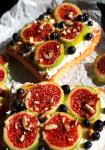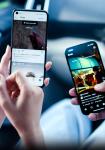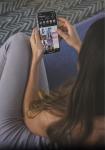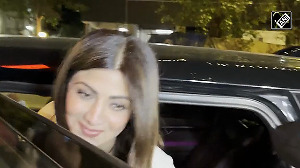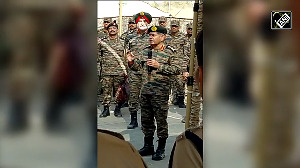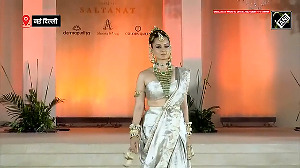According to the Bureau of Indian Standards there are 1,200 bottled water factories all over India (of which 600 are in one state -- Tamil Nadu). Over 100 brands are vying for the Rs 1,000-crore (Rs 10 billion) bottled water market and are hard selling their products in every way possible -- better margins to dealers, aggressive advertising, catchy taglines.... In such a scenario, The Strategist takes a look at how it all started -- with Bisleri -- and how Ramesh Chauhan, chairman, Parle Bisleri created a market out of pure water. Excerpts from a conversation with Prerna Raturi:
Can I be honest? When we bought Bisleri mineral water from the Italian company, Felice Bisleri, in 1969 -- the company had been unable to market bottled water and wanted to exit the market -- we too did not see any potential for the product at that time.
As a soft drinks company, we had Thums Up, Gold Spot and Limca (cola, orange drink and lemonade) but no soft drink company was complete without a soda. So we merely used the name and launched Bisleri soda with two variants -- carbonated and non-carbonated mineral water.
But three decades ago, what could we say about a category that had no market? We didn't know our target group. Then, since bottled water is colourless, tasteless and odourless, it was not an easy product to advertise.
Thus, the earlier brand building efforts focused on Bisleri being healthy with adequate minerals. The Italian name added a dash of class to it. The first print ad campaign captured the international essence and showed a butler with a bow tie, holding two bottles of Bisleri.
The punchline was, "Bisleri is veri veri extraordinari" (the spelling of the punchline was designed to capture the consumer's attention). The campaign was successful and we were being noticed as someone who catered to the need for safe, healthy drinking water.
However, the real boost to mineral water came in the early-to-mid-1980s when we switched to PVC packaging and later to PET bottles. The PET packaging did not just ensure better transparency -- we could now show sparkling clear water to the consumers. It also meant better life for the water.
Meanwhile, Bisleri soda was doing well but we had to discontinue production as we sold our soft drink brands to Coca-Cola in 1993. But my interest was in building brands and not in bottling soft drinks. That's when I started to concentrate on developing the Bisleri water brand.
There was a clear opportunity of building a market for bottled water. The quality of water available in the country was bad. It was similar to what Europe faced before World War II. The quality of water in Europe was extremely poor, which created the bottled water industry there. In India, too, not only was water scarce, whatever was available was of bad quality.
Initially, though bottled water was something only foreigners and non-resident Indians consumed, we still had to increase the distribution, which meant the dealer margins reduced. And because of limited sales, the dealer margin had to be kept high to compensate low sales. Now we had to push sales.
But to reach out to the masses, we had to make the category more affordable. The introduction of a comfortable-to-carry 500-ml bottle for just Rs 5 in 1995 not only answered that need, but also meant doing away with carrying the excess water or throwing it away if you were to buy a one-litre bottle.
The idea was a success and gave the company a growth of 400 per cent. We also introduced the 1.2 litre bottle in 2000, which was aimed at those who share their water. This also gave us the advantage of higher margins that a crate (12 bottles) generated.
With other brands joining the fray, things were hotting up -- the bottled-water market was estimated at Rs 300 crore (Rs 3 billion) and was growing at 50 per cent a year. Bisleri had captured 40 per cent of the market.
We realised it was time to move to the next level -- the bulk segment. Several commercial establishments had no access to piped water. We tapped into this segment by introducing the 12-litre container, followed by the 20-litre can. The bulk segment also helped bring down the price per litre from Rs 10-12 a litre to about Rs 3 a litre.
At present, the bulk segment constitutes 60 to 70 per cent of our sales and we intend to increase it to 80 per cent in the next two years. With water scarcity in several cities, even households are demanding bottled water now.
The home pack was made more user-friendly by introducing pouring spouts and jars with dispensers. At the same time, we were constantly looking for new ways to tap the market. We noticed that during wedding receptions, the older guests (above 50 years of age) generally stayed away from ice cream, soft drinks and so on.
Hence, we introduced free sampling of Bisleri at the tables where the elderly guests would sit. Soon customers were ordering bottled water on special occasions. Currently, the consumption of bottled water is far in excess of soft drinks on such occasions.
The other major challenge was distribution. I still have the mindset of a soft drink seller. Soft drink sales are in glass bottles and the distribution model is built around picking up empty bottles and getting them back to the factory. That's not the case with the retail bottled water packs (below 2 litre). But a product that's not available where it's needed, is useless.
The number of outlets where Bisleri is available has increased from 50,000 in 1995 to 2,00,000 at present. But that is not enough -- we need to keep looking for different avenues. Take stationery shops and chemists, for instance. They don't keep soft drinks but sell Bisleri. That is the kind of exclusivity we look for to get ahead of the distribution network that soft drink companies talk of.
The journey till now
1969: Buys Bisleri bottled water from an Italian company, Felice Bisleri. It was bottled in glass bottles then.
Early-1980s: Shifts to PVC bottles. Sales surge
Mid-1980s: Switches to PET bottles, which meant more transparency and life for water.
1993: Sells carbonated drink brands like Thums Up, Gold Spot and Limca to Coca-Cola for Rs 400 crore.
1995: Bisleri launches a 500 ml bottle and sales shoot up by 400 per cent.
2000: Introduces the 20-litre container to bring prices down from Rs 10 a litre to Rs 2 a litre.
1998: Introduces a tamper-proof and tamper-evident seal.
2000: BIS cancels Bisleri's licence of a water bottling in Delhi since some of the bottles did not carry ISI label; the licence is restored one-and-a-half months later.
2002: Kinley overtakes Bisleri. The national retail stores audit by ORG-MARG show Kinley's marketshare at 35.1 per cent compared to Bisleri's 34.4 per cent.
2003: Bisleri says it plans to venture out into Europe and America to sell bottled water
